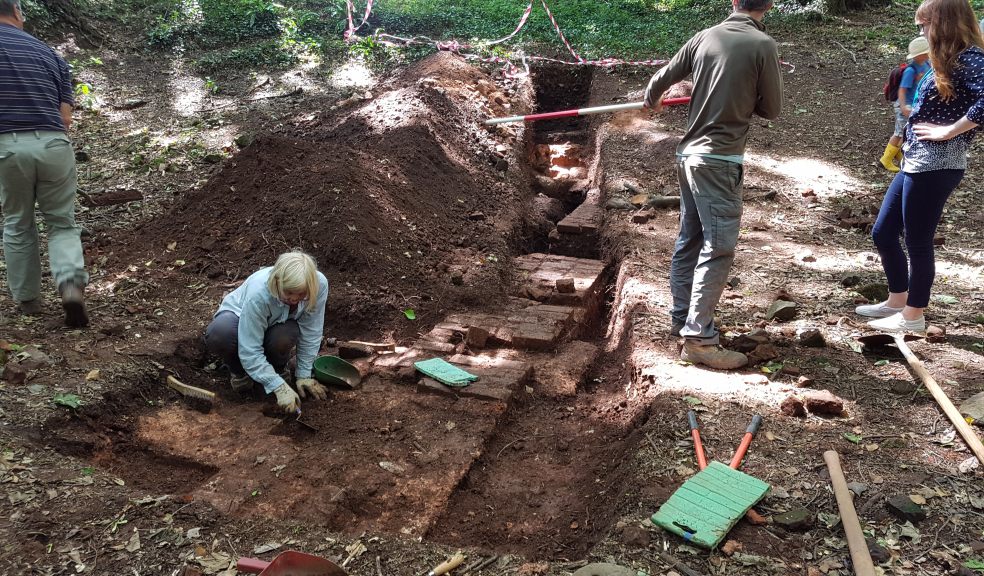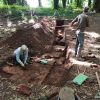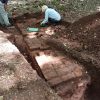
Archaeologists unearth remains to prove theory of lost Exeter mansion
Archaeologists have uncovered remains of a large building on the National Trust’s Killerton estate.
This significant find supports the theory that these are the remains of Killerton’s lost house; a grand mansion designed by renowned architect James Wyatt, the location of which has been lost for 240 years.
Rumours about the lost mansion have persisted for many years, but no-one has been able to find where the building was located. All that remained of the mansion are designs by Wyatt for a building three times bigger than the current Killerton House, and a few surviving letters and accounts, but no record of its location.
It was recently announced that an archaeological survey of the Killerton’s parkland showed a LIDAR image, which highlighted something unexpected. In the woods above Killerton house was a large rectangular earth bank hidden by laurel, the size and shape of which matched the surviving plans of the Wyatt’s building. A team of countryside volunteers cleared the site, revealing a huge space filled with brick and stone. Had the National Trust found the house that Devon never had?
Andy Bramwell from the National Trust said, ‘The LIDAR image and the size of the site got us really excited that we’d finally found Wyatt’s unfinished house. But it was still a theory – there was no proof. It could have been a large quarry or brickworks, similar to others in the woods above Killerton’.
But this week a team of volunteer archaeologists led by Joe Bampton from South West Archaeology made an exciting discovery. They dug a trench into the earth bank and uncovered the remains of several walls and a doorway.
Joe explained, “The thickness and size of these walls tell me they were part of a big building of the same scale as Wyatt’s lost house. We found part of the interior walls and the incredibly solid exterior wall. We plotted the location against the floorplan and can say that the doorway would have been the entrance to the Billiard Room, which is marked on the floorplan. Judging from the material which lay over the walls it looks like the site was purposefully backfilled using spoil once the building work stopped’.
Fi Hailstone from Killerton’s countryside team said, ‘We never expected to find such extensive foundations under the site. The find is proof that this site is where James Wyatt started building a huge new house for the Acland family. We’ve been able to fill a gap in Killerton’s history can now put the rumours to bed – Killerton’s lost house has been found.’
The National Trust has opened up the site of the ‘lost’ house to the public as part of a new experience called ‘Lost Killerton’. The Lost Killerton trail includes two more intriguing lost buildings, the mysterious white folly tower and an ornate orangery, as well as exploring some of the lost landscapes in the parkland. Andy said, ‘You can pick up a trail leaflet and explore Lost Killerton under your own steam, or join one of the regular guided walks to get the inside story about why this grand mansion was never finished’. Lost Killerton is open to the public daily until 20 October 2017.
Further information about Lost Killerton and events at Killerton can be found on the National Trust website: nationaltrust.org.uk/killerton
Photos: Fiona Hailstone.


















